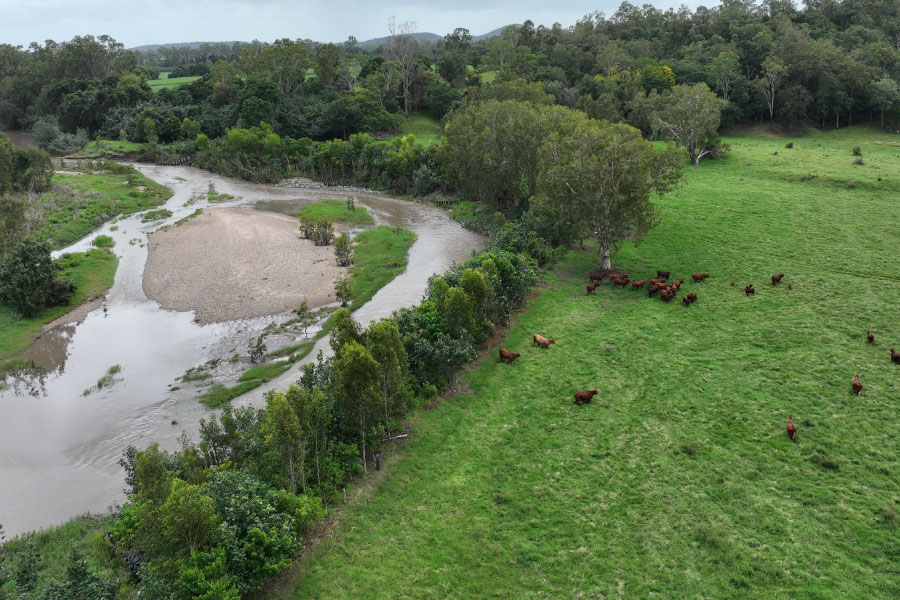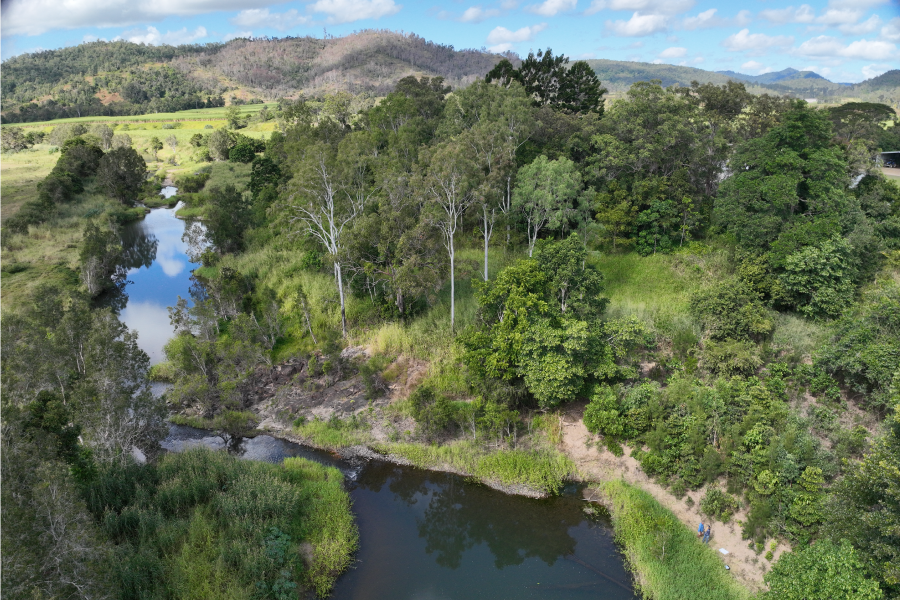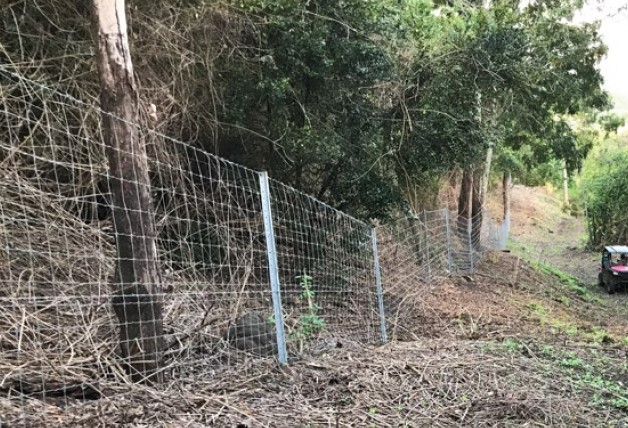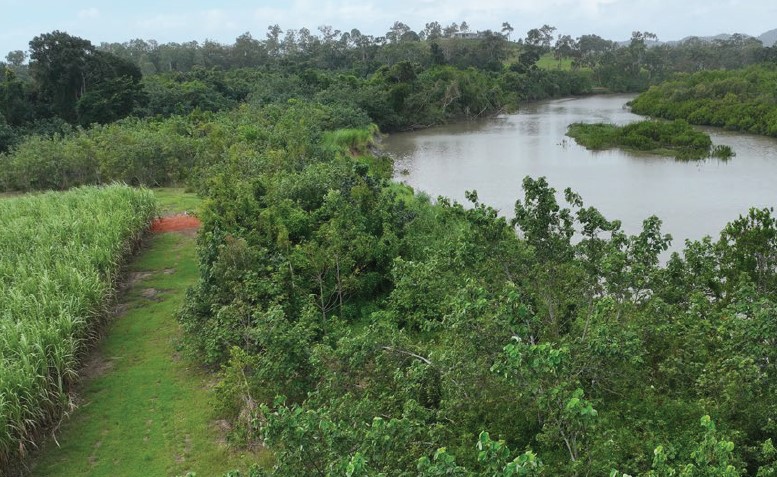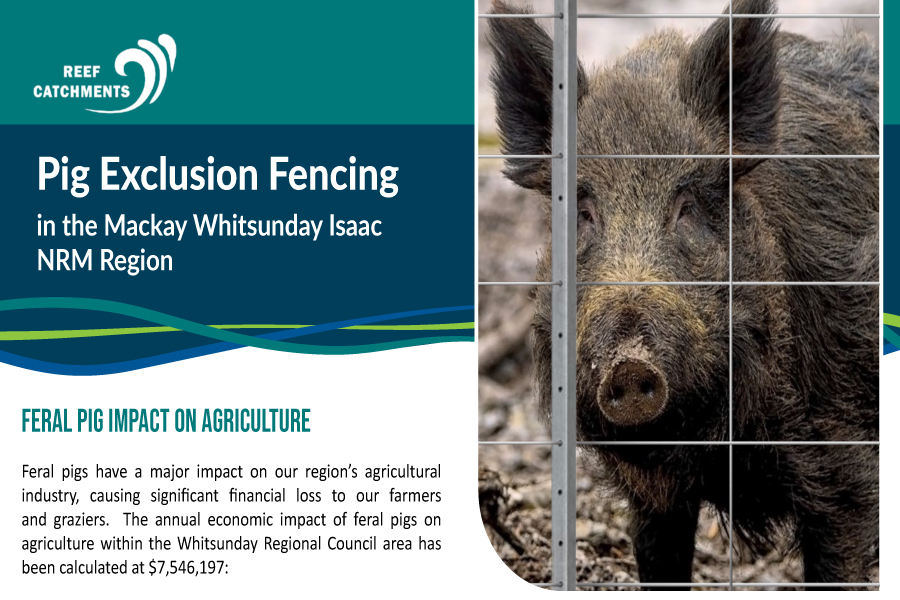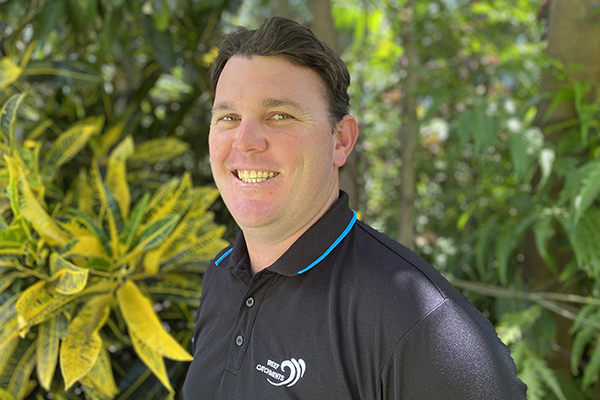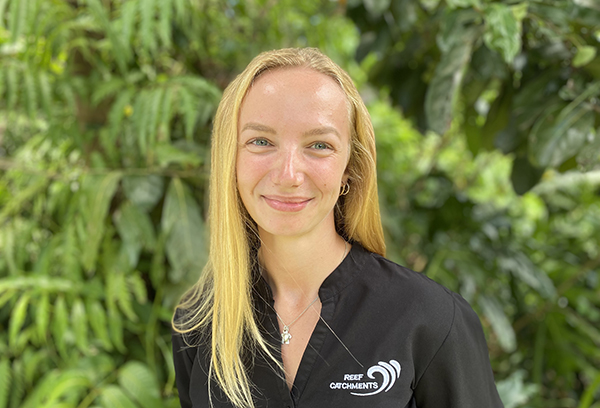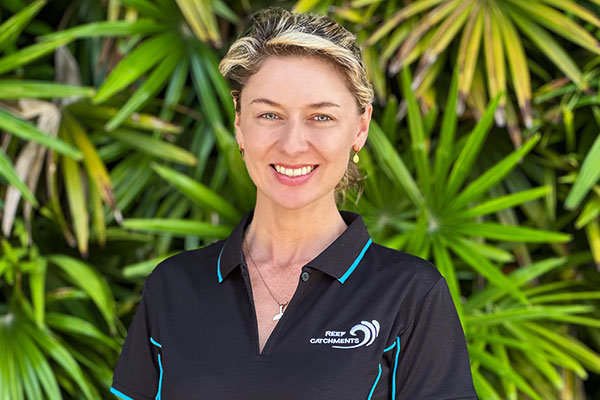Preparing Australian Communities – Local Stream – Nature Based Solutions to Build Regional Resilience project (the project) aims to improve the long-term resilience of the local community to natural hazards including floods and tropical cyclones through the delivery of preparedness, awareness and risk reduction activities.
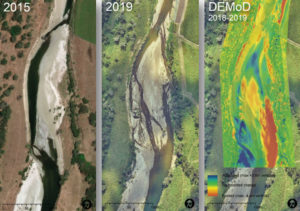
In recent years the Mackay Whitsunday region has experienced several catastrophic climate driven events, namely the Queensland Monsoon Trough (2019) and Tropical Cyclone Debbie (2017). These events led to widespread damage of natural assets and built infrastructure across the region. It was evident throughout the region, the areas that best responded to these events had healthy riparian zones that acted as a natural buffer to the extreme volume and force of water flowing through the system. Conversely, in many areas where riparian zones lacked such resilience, there was intense damage from erosion and required much greater investment in recovery and remediation.
To better prepare for future climate driven events, the project will deliver on the objectives of the Preparing Australia Program within the Mackay and Whitsunday local government areas by increasing the community’s ability to withstand floods and tropical cyclones in the natural environment through strengthening and repairing natural ecosystems that act as a buffer to the impacts of natural disasters.
The project aims to deliver these goals by improving three key areas:
● Preparedness by completion of a comprehensive regional streambank resilience study
● Awareness and capacity building through education and community consultation, and
● Infrastructure by supporting riparian fencing throughout the region, implementing best management strategies leading to a more resilient system capable of mitigating the damage caused by climate driven events.
The project will run until 31 March 2025 and will engage landholders from across all catchments within Reef Catchments’ NRM operational area, which includes the Proserpine River, Pioneer River, O’Connell River and Plane Creek Basins. There are three components to the project and landholders will have the opportunity to participate through community education and awareness events such as workshops and field days and through the riparian fencing component. Further details on each project component are outlined below.
Streambank Prioritisation Study
To improve local preparedness to extreme events, Reef Catchments has partnered with Neilly Group Engineering to undertake a regional erosion identification, prioritisation and remediation study. The objective of this study will be to undertake a comprehensive investigation of all sub-catchments, major waterways and their tributaries within Reef Catchments’ NRM operational area and identify locations where pre-emptive intervention can be undertaken to address streambank erosion and channel migration to increase resilience to future natural disasters.
Reef Catchments and regional partners will be provided with the information necessary to proactively manage natural infrastructure within the region. The outcome of this will be increased preparedness and resilience to future tropical cyclone and flood events by identifying at-risk locations and providing an opportunity to intervene early before the next extreme flooding event.
Community Education and Awareness
Riparian zones are natural buffers to climate driven events such as flooding and cyclones, and while the streams and watercourses that lie adjacent to riparian areas are often appreciated by the community, these areas and their important ecological services are often forgotten.
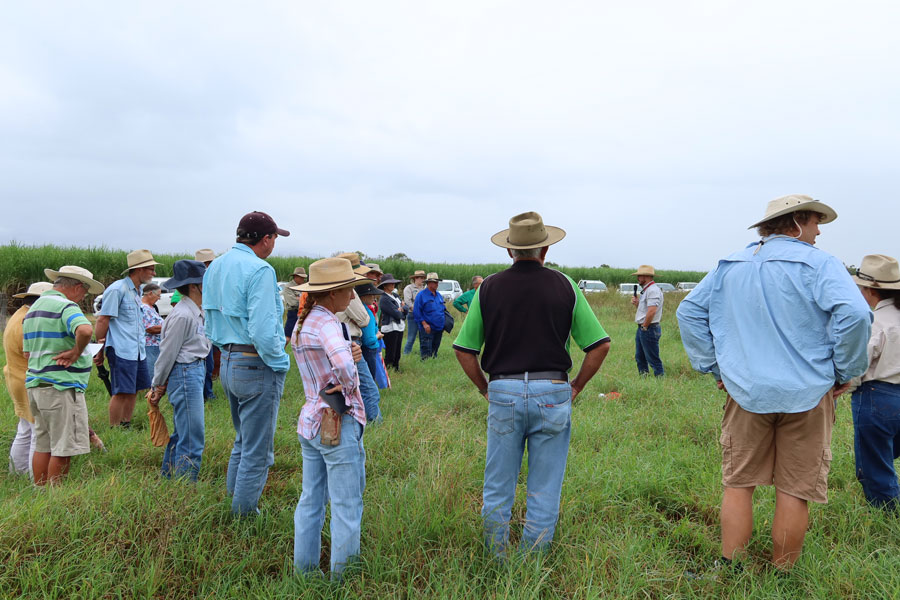
In recognition of this, Reef Catchments will create a tailored education program focusing on raising awareness towards best practice waterway management. The education program will focus on how to build system resilience and natural buffer capability through riparian management of a variety of topics including but not limited to:
● How the healthy riparian buffer reduces the force, height and volume of floodwaters,
● Weed management,
● Fire management,
● Stock/pest animal management,
● Maximising community benefits through ecological services,
● The role of ecosystem engineers & keystone species in building environmental resilience,
● Landscape Connectivity – environmental resilience and buffer capability.
Another key component of the education program is the development of a legacy document highlighting riparian management and its intrinsic values throughout the Mackay Whitsunday region. This document will be developed in collaboration with various stakeholders from throughout the region including traditional owners, landholders, land managers, government officials, environmental specialists, and other local service providers.
Infrastructure – Riparian Fencing Program
Reef Catchments will deliver a region-wide riparian fencing program to protect and restore streambanks and streambank vegetation. Protection of the riparian areas reduces the potential for erosion and subsequent sedimentation of the waterways. The project will aim to complete over 100km of riparian protection through riparian fencing and the adoption of improved management strategies, including off stream water points to ensure fence integrity. The riparian fencing component will be delivered through a grant program funded 40% by project funds and 60% as an in-kind contribution from landholders.
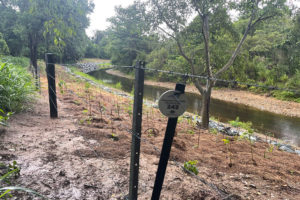
Controlling stock and/or pest access to waterways is a proven and cost-effective method of improving waterway resilience. This will have a positive environmental impact by encouraging natural recruitment along the riparian zones and increasing riparian buffering capacity. It also reduces the risk of damage to adjacent infrastructure and farming land from environmental hazards such as erosion and riverbank degradation. Increasing the capacity for natural recruitment of local native riparian species back into riparian zones provides a nature-based solution to improving regional resilience of our local waterways.
Please note this grant is now closed. For information on available Riparian Fencing Grants, please visit our Continuing the Path to Regional Resilience, Advancing Nature-Based Solutions project page.
![]()
